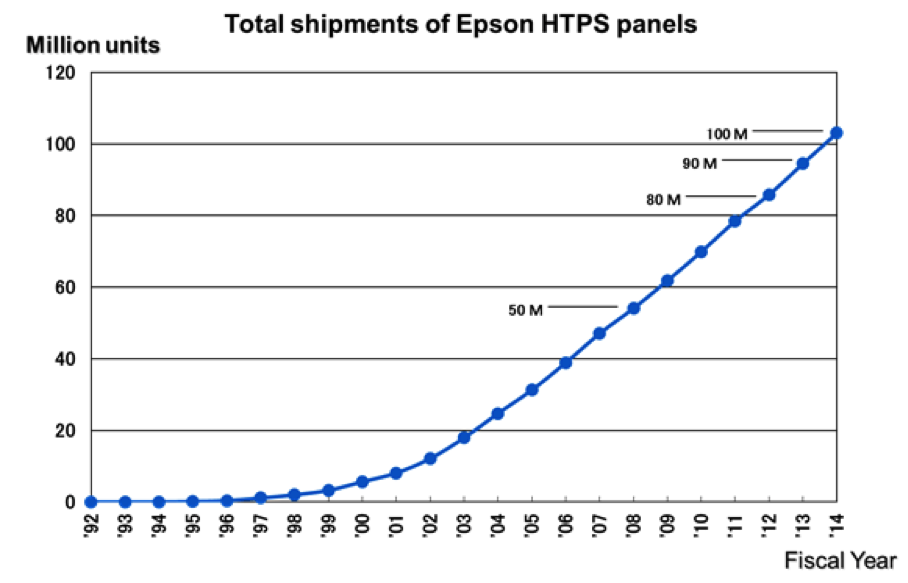



Feature Story
More feature stories by year:
2024
2023
2022
2021
2020
2019
2018
2017
2016
2015
2014
2013
2012
2011
2010
2009
2008
2007
2006
2005
2004
2003
2002
2001
2000
1999
1998
![]() Return to: 2016 Feature Stories
Return to: 2016 Feature Stories
CLIENT: IDTECHEX
Feb. 8, 2016: IEEE Computing Now
by Harry Zervos, Principal Analyst/Business Development Manager, North America
The market for smart glasses and functional contact lenses will be worth over $26 billion by 2026. And it will be diverse – encompassing augmented and virtual reality headsets to remarkable embedded functionalities in lenses. In fact, as outlined in the IDTechEx report, "AR & VR Smartglasses and Functional Contact Lenses 2016-2026", annual volume of VR headsets is expected to top 10 million units by 2019.
This post will concentrate on LCD, LED, and OLED microdisplay technologies as they will compete for integration into smartglasses, a market that is expected to experience significant growth with VR products leading the charge.
There are currently several suppliers of liquid crystal microdisplays that are currently available and have been integrated in different products. Kopin's transmissive LCD on single crystal silicon transistors has been utilized in smartglasses from Vuzix and Recon, as well as in the company's own brand headset, the Solos. Devices based on ferroelectric liquid crystals (FLCoS for short) are also of interest, as they are inherently faster switching than other liquid crystals.

Epson has shipped over 100 million units of its transmissive LCD microdisplays, albeit mostly for projector applications. Source: Epson
Non-emissive systems like LCDs require an external light source with light always incident on every pixel, irrespective of whether said pixel is on or off, an undesirable trait for any portable application where battery life is paramount.
Emissive types of displays rectify that problem and can be more energy efficient, one of the main reasons there's a significant interest in micro-OLED displays, along with their higher contrast, faster response time and a wider operating temperature range.
Unfortunately current generations of µ-OLEDs are limited in brightness and experience short device life-times when run in high brightness conditions. As a result, there is significant research and development effort in making brighter, longer-lifetime OLEDs, with prototypes that use direct color emission rather than RGB color filter arrays showing significant promise in that respect.
Micro-LEDs, also an emissive display technology that benefits from reduced power consumption, have been demonstrated to operate efficiently at higher brightness than that of an OLED display and in that respect can deliver an emissive, high brightness solution. The drawback of LEDs is that they are inherently monochrome and it is not yet clear how scalable these can be.
| microdisplay technology | LCD | LCoS | micro OLED | micro LED |
| Power consumption | ◼ | ◼ | ◼ ◼ | ◼ ◼ ◼ |
| Technology maturity | ◼ ◼ ◼ |
◼ ◼ 1/2 | ◼ ◼ | ◼ |
| Ease of manufacturing - scalability | ◼ ◼ ◼ |
◼ ◼ ◼ | ◼ ◼ | ◼ |
| Brightness | ◼ ◼ | ◼ ◼ 1/2 | ◼ | ◼ ◼ ◼ |
| Contrast | ◼ ◼ | ◼ ◼ | ◼ ◼ ◼ | ◼ ◼ ◼ |
Microdisplay technology comparison of key metrics. (Source: IDTechEx report "AR & VR Smartglasses and Functional Contact Lenses 2016-2026", www.idtechex.com/glasses)
In the short to mid-term, the major competing technologies are the more mature ones, liquid crystal and OLED based microdisplays. Assuming that micro- LED technologies overcome challenges relating to manufacturing complexity and scalability we will potentially see them carving up market share in the future. VerLASE Technologies might be simplifying micro-LED structures (but also micro OLED structures too) with its revolutionary Chromover™ wavelength conversion technology. And of course, virtual retinal displays might be disruptive in their own right, what with putting the issue of resolution to sleep!
Learn more at the IDTechEx Show! in Berlin, April 27-28.
Return to: 2016 Feature Stories